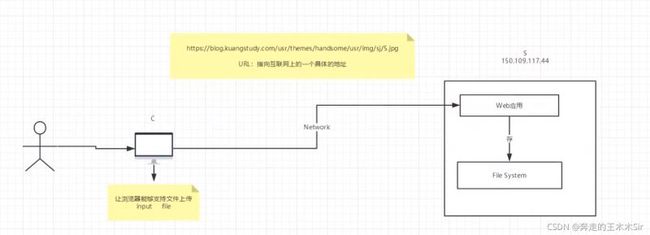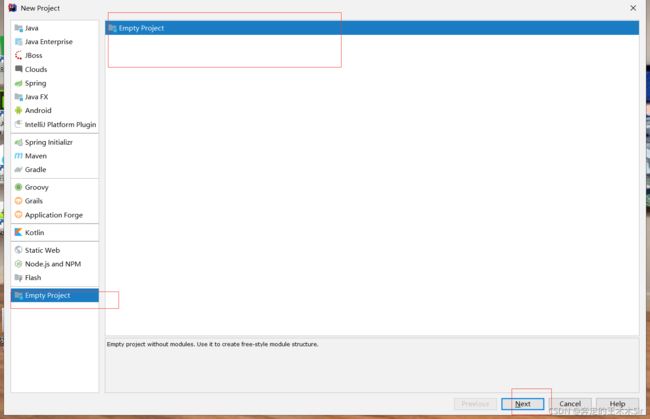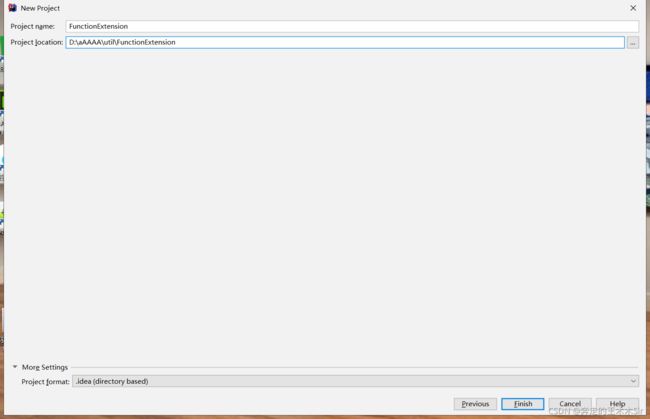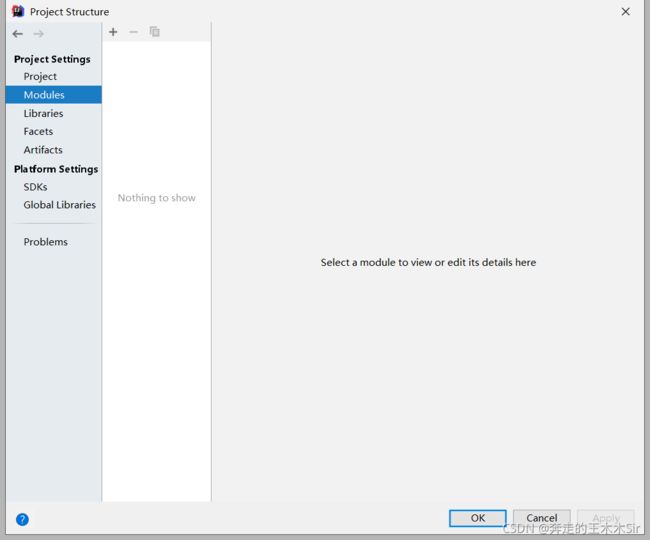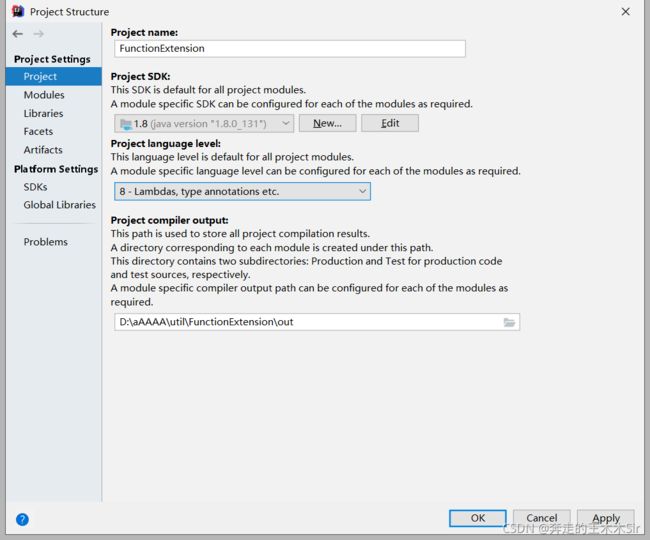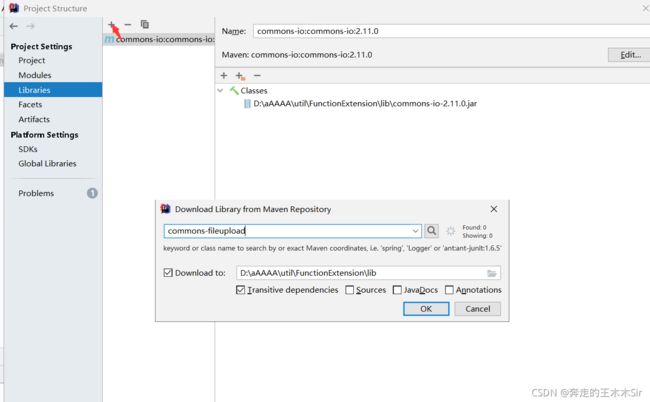1. 文件传输原理及介绍
2. JavaWeb文件上传
2.1我们用一个新的方式创建项目
空项目会直接弹出框
把jdk版本设置好
点击确定后是比较干净的,啥都不会,不要慌,点击file->new->module。之后就和之前做过的一样了
创建model:file,配置tomcat运行保证没有错误
2.2 导包
可以选择去maven仓库中下,也可以在官网上搜出来然后复制到项目中,我们创建一个文件夹lib,然后如果从外面复制到项目中需要右键点击add as library添加到内库中
上述只是讲一个新建项目的方式,我后面还是按照之前的用maven进行了一个项目完成
2.3 实用类介绍
文件上传的注意事项
1.为保证服务器安全,上传文件应该放在外界无法直接访问的目录下,比如放在WEB-INF目录下。
2.为防止文件覆盖的现象发生,要为上传文件产生一个唯一的文件名,
- 加一个时间戳
- UUID
- md5
- 自己写位运算算法
3.要限制上传文件的最大值
4.可以限制上传文件的类型,在收到上传文件名时,判断后缀名是否合法。
需要用到的类详解
ServletFileUpload负责处理上传的文件数据,并将表单中每个输入项封账成一个fileItem对象,在使用ServletFileUpload对象解析请求时需要DiskFileItemFactory对象。所以,我们需要在进行解析工作前构造好DiskFileItemFactory对象,通过ServletFileUpload对象的构造方法或setFileItemFactory()方法设置ServletFileUpload对象的fileItemFactory属性。
FileItem类
在HTML页面input必须有
表单中如果包含一个文件上传输入项的话,这个表单的enctype属性就必须设置为multipart/form-data
常用方法介绍
//isFromField方法用于判断FileItem类对象封装的数据是一个普通文本表单还是一个文件表单,如果是普通表单就返回true,否则返回false boolean isFormField(); //getFieldName方法用于返回表单标签name属性的值 String getFieldName(); //getString方法用于将FileItem对象中保存的数据流内容以一个字符串返回 String getString(); //getName方法用于获得文件上传字段中的文件名 String getName(); //以流的形式返回上传文件的数据内容 InputStream getInputStream(); //delete方法用来清空FileItem类对象中存放的主体内容。如果主题内容被保存在临时文件中,delete方法将删除该临时文件 void delete();
ServletFileUpload类
ServletFileUpload负责处理上传的文件数据,并将表单中每个输入项封装成一个FileItem对象中,使用其parseRequest(HttpServletRequest)方法可以将通过表单中每一个HTML标签提交的数据封装成一个FIleItem对象,然后以list列表的形式返回。使用该方法处理上传文件简单易用
2.4 pom.xml导入需要的依赖
javax.servlet javax.servlet-api 4.0.1 javax.servlet.jsp javax.servlet.jsp-api 2.3.3 commons-fileupload commons-fileupload 1.4 commons-io commons-io 2.6
2.5 index.jsp
<%@ page contentType="text/html;charset=UTF-8" language="java" %>
$Title$
<%--通过表单上传文件;
get:上传文件大小有限制
post:上传文件大小没有限制
${pageContext.request.contextPath}获取服务器当前路径
--%>
2.6 info.jsp
该页面主要用于接受message
<%@ page contentType="text/html;charset=UTF-8" language="java" %>
Title
<%=request.getAttribute("msg")%>
2.7 FileServlet
这里的包一定要注意不要导错了。另外这里使用了封装的方法让结构看起来更简洁
import org.apache.commons.fileupload.FileItem;
import org.apache.commons.fileupload.FileUploadException;
import org.apache.commons.fileupload.ProgressListener;
import org.apache.commons.fileupload.disk.DiskFileItemFactory;
import org.apache.commons.fileupload.servlet.ServletFileUpload;
import javax.servlet.ServletException;
import javax.servlet.http.HttpServlet;
import javax.servlet.http.HttpServletRequest;
import javax.servlet.http.HttpServletResponse;
import java.io.*;
import java.util.List;
import java.util.UUID;
public class FileServlet extends HttpServlet {
@Override
protected void doGet(HttpServletRequest req, HttpServletResponse resp) throws ServletException, IOException {
doPost(req, resp);
}
@Override
protected void doPost(HttpServletRequest req, HttpServletResponse resp) throws ServletException, IOException {
//判断上传的文件是普通表单还是带文件的表单
if (!ServletFileUpload.isMultipartContent(req)) {
return;//终止方法运行,说明这是一个普通的表单
}
//创建上传文件的保存路径,建议在WEB-INF路径下,安全,用户无法直接访问上传的文件
//获得全局的上下文,地址
String uploadPath = this.getServletContext().getRealPath("/WEB-INF/upload");
File uploadFile = new File(uploadPath);
if (!uploadFile.exists()) {
uploadFile.mkdir();//创建这个目录
}
//缓存,临时文件
//临时文件,假如文件超过了预期的大小,我们就把他放到一个临时文件中,过几天激动删除,或者提醒用户转存为永久
String tmpPath = this.getServletContext().getRealPath("/WEB-INF/tmp");
File tmpFile = new File(tmpPath);
if (!tmpFile.exists()) {
tmpFile.mkdir();//创建这个目录
}
//处理上传的文件,一般需要通过流来获取,我们可以使用request.getInputStream(),原生态的文件上传流获取,
//上面的太麻烦,建议使用APache的文件上传组件来实现,common-fileupload,它需要依赖于commons-io组件
try {
//1.创建DiskFileItemFactory对象,处理文件上传路径或者大小限制的
DiskFileItemFactory factory = getDiskFileItemFactory(tmpFile);
//2.获取ServletFileUpload
ServletFileUpload upload = getServletFileUpload(factory);
//3.处理上传文件
String msg = uploadParseRequest(upload, req, uploadPath);
//servlet请求转发消息
req.setAttribute("msg", msg);
req.getRequestDispatcher("info.jsp").forward(req, resp);
} catch (FileUploadException e) {
e.printStackTrace();
}
}
public static DiskFileItemFactory getDiskFileItemFactory(File tmpFile) {
DiskFileItemFactory factory = new DiskFileItemFactory();
//通过这个工厂设置一个缓冲区,当上传的文件大于这个缓冲区的时候,将他放到临时文件中
//可以设可以不设
factory.setSizeThreshold(1024 * 1024);
factory.setRepository(tmpFile);
return factory;
}
public static ServletFileUpload getServletFileUpload(DiskFileItemFactory factory) {
//2.获取ServletFileUpload
ServletFileUpload upload = new ServletFileUpload(factory);
//可以设,可以不设
//监听文件上传进度
upload.setProgressListener(new ProgressListener() {
//pContentLength:文件大小
//pBytesRead:已经读取到的文件大小
@Override
public void update(long pBytesRead, long pContentLength, int pItems) {
System.out.println("总大小:" + pContentLength + "已上传" + pBytesRead);
}
});
//处理乱码问题
upload.setHeaderEncoding("UTF-8");
//设置单个文件的最大值
upload.setFileSizeMax(1024 * 1024 * 10);
//设置总共能够上传的文件的大小
//1024 = 1kb * 1024 = 1M * 10 = 10M
upload.setSizeMax(1024 * 1024 * 10);
return upload;
}
public static String uploadParseRequest(ServletFileUpload upload, HttpServletRequest req, String uploadPath) throws FileUploadException, IOException {
String msg = "";
//3.处理上传文件
//把前端请求解析,封装成一个FileItem对象,需要从ServletFileUpload对象中获取
List fileItems = upload.parseRequest(req);
//每一个表单对象
for (FileItem fileItem : fileItems) {
//判断上传的文件是普通的表单还是带文件的表单
if (fileItem.isFormField()) {
//getFieldName()指的是前端表单控件的name
String name = fileItem.getFieldName();
String value = fileItem.getString("UTF-8");//处理乱码
System.out.println(name + ":" + value);
} else { //文件的情况
//=====处理文件
//拿到文件名字
String uploadFileName = fileItem.getName();
System.out.println("上传的文件名:" + uploadFileName);
if (uploadFileName.trim().equals("") || uploadFileName == null) {
continue;
}
//获得文件上传的文件名和后缀名;/images/boys/dajie.jpg 下面这块不是必须的
String fileName = uploadFileName.substring(uploadFileName.lastIndexOf("/") + 1);
String fileExtName = uploadFileName.substring(uploadFileName.lastIndexOf(".") + 1);
//如果文件后缀名fileExtName不是我们所需要的就直接return,不处理,告诉用户文件类型不对
System.out.println("文件信息【件名:" + fileName + "---文件类型" + fileExtName + "】");
//可以使用UUID(唯一识别的通用码),保证文件名唯一
//UUID.randomUUID(),随机生成一个唯一识别的通用码
//网络传输中的东西,都需要序列化,
//比如:POJO,实体类,如果想要在多个电脑上运行,需要进行传输===>需要把对象序列化
//implements Serializable :标记接口,JVM--> java栈 本地方法栈 ; native---》C++
String uuidPath = UUID.randomUUID().toString();
//===处理文件结束
//=====存放地址
//存到哪?uploadPath
//文件真实存在的路径realPath
String realPath = uploadPath + "/" + uuidPath;
//给每个文件创建一个对应的文件夹
File realPathFile = new File(realPath);
if (!realPathFile.exists()) {
realPathFile.mkdir();
}
//=====存放地址完毕
//=====文件传输
//获得文件上传的流
InputStream inputStream = fileItem.getInputStream();
//创建一个文件输出流
//realPath = 真实的文件夹
//差了一个文件,加上输出的文件的名字+"/" +uuidFileName
FileOutputStream fos = new FileOutputStream(realPath + "/" + fileName);
//创建一个缓冲区
byte[] buffer = new byte[1024 * 1024];
//判断是否读取完毕
int len = 0;
//如果大于0说明还存在数据
while ((len = inputStream.read(buffer)) > 0) {
fos.write(buffer, 0, len);
}
//关闭流
fos.close();
inputStream.close();
msg = "文件上传成功!";
fileItem.delete();//上传成功,清楚临时文件
}
}
return msg;
}
}
2.8 配置Servlet
FileServlet com.hxl.servlet.FileServlet FileServlet /upload.do
2.9 测试结果
3. SpringMVC文件上传和下载
3.1 上传
在controller中有两种方式
新建一个module,一套流程整体下来。测试能运行即可
−−>导入jar包
commons-fileupload commons-fileupload 1.3.3 javax.servlet javax.servlet-api 4.0.1
−−>index.jsp
<%@ page contentType="text/html;charset=UTF-8" language="java" %>
文件上传和下载
−−>applicationContext.xml中配置bean
−−>FileController
package com.hxl.controller;
import org.springframework.web.bind.annotation.RequestMapping;
import org.springframework.web.bind.annotation.RequestParam;
import org.springframework.web.bind.annotation.RestController;
import org.springframework.web.multipart.commons.CommonsMultipartFile;
import javax.servlet.http.HttpServletRequest;
import java.io.*;
@RestController
public class FileController {
//@RequestParam("file") 将name=file控件得到的文件封装成CommonsMultipartFile 对象
//批量上传CommonsMultipartFile则为数组即可
@RequestMapping("/upload")
public String fileUpload(@RequestParam("file") CommonsMultipartFile file , HttpServletRequest request) throws IOException {
//获取文件名 : file.getOriginalFilename();
String uploadFileName = file.getOriginalFilename();
//如果文件名为空,直接回到首页!
if ("".equals(uploadFileName)){
return "redirect:/index.jsp";
}
System.out.println("上传文件名 : "+uploadFileName);
//上传路径保存设置
String path = request.getServletContext().getRealPath("/upload");
//如果路径不存在,创建一个
File realPath = new File(path);
if (!realPath.exists()){
realPath.mkdir();
}
System.out.println("上传文件保存地址:"+realPath);
InputStream is = file.getInputStream(); //文件输入流
OutputStream os = new FileOutputStream(new File(realPath,uploadFileName)); //文件输出流
//读取写出
int len=0;
byte[] buffer = new byte[1024];
while ((len=is.read(buffer))!=-1){
os.write(buffer,0,len);
os.flush();
}
os.close();
is.close();
return "redirect:/index.jsp";
}
/*
* 采用file.Transto 来保存上传的文件
*/
@RequestMapping("/upload2")
public String fileUpload2(@RequestParam("file") CommonsMultipartFile file, HttpServletRequest request) throws IOException {
//上传路径保存设置
String path = request.getServletContext().getRealPath("/upload");
File realPath = new File(path);
if (!realPath.exists()){
realPath.mkdir();
}
//上传文件地址
System.out.println("上传文件保存地址:"+realPath);
//通过CommonsMultipartFile的方法直接写文件(注意这个时候)
file.transferTo(new File(realPath +"/"+ file.getOriginalFilename()));
return "redirect:/index.jsp";
}
}
−−>测试:
3.2 下载
1、设置 response 响应头
2、读取文件 – InputStream
3、写出文件 – OutputStream
4、执行操作
5、关闭流 (先开后关)
−−>index.jsp
−−>增加一个upload文件
并且把要下载的图片弄进去
−−>controller
@RequestMapping(value="/download")
public String downloads(HttpServletResponse response , HttpServletRequest request) throws Exception{
//要下载的图片地址
String path = request.getServletContext().getRealPath("/upload");
//String fileName = "你想要下载的文件,要加上后缀";
String fileName = "1.jpg";
//1、设置response 响应头
response.reset(); //设置页面不缓存,清空buffer
response.setCharacterEncoding("UTF-8"); //字符编码
response.setContentType("multipart/form-data"); //二进制传输数据
//设置响应头
response.setHeader("Content-Disposition",
"attachment;fileName="+ URLEncoder.encode(fileName, "UTF-8"));
File file = new File(path,fileName);
//2、 读取文件--输入流
InputStream input=new FileInputStream(file);
//3、 写出文件--输出流
OutputStream out = response.getOutputStream();
byte[] buff =new byte[1024];
int index=0;
//4、执行 写出操作
while((index= input.read(buff))!= -1){
out.write(buff, 0, index);
out.flush();
}
out.close();
input.close();
return "ok";
}
−−>测试:
以上就是详解JavaWeb如何实现文件上传和下载功能的详细内容,更多关于JavaWeb文件上传和下载的资料请关注脚本之家其它相关文章!
